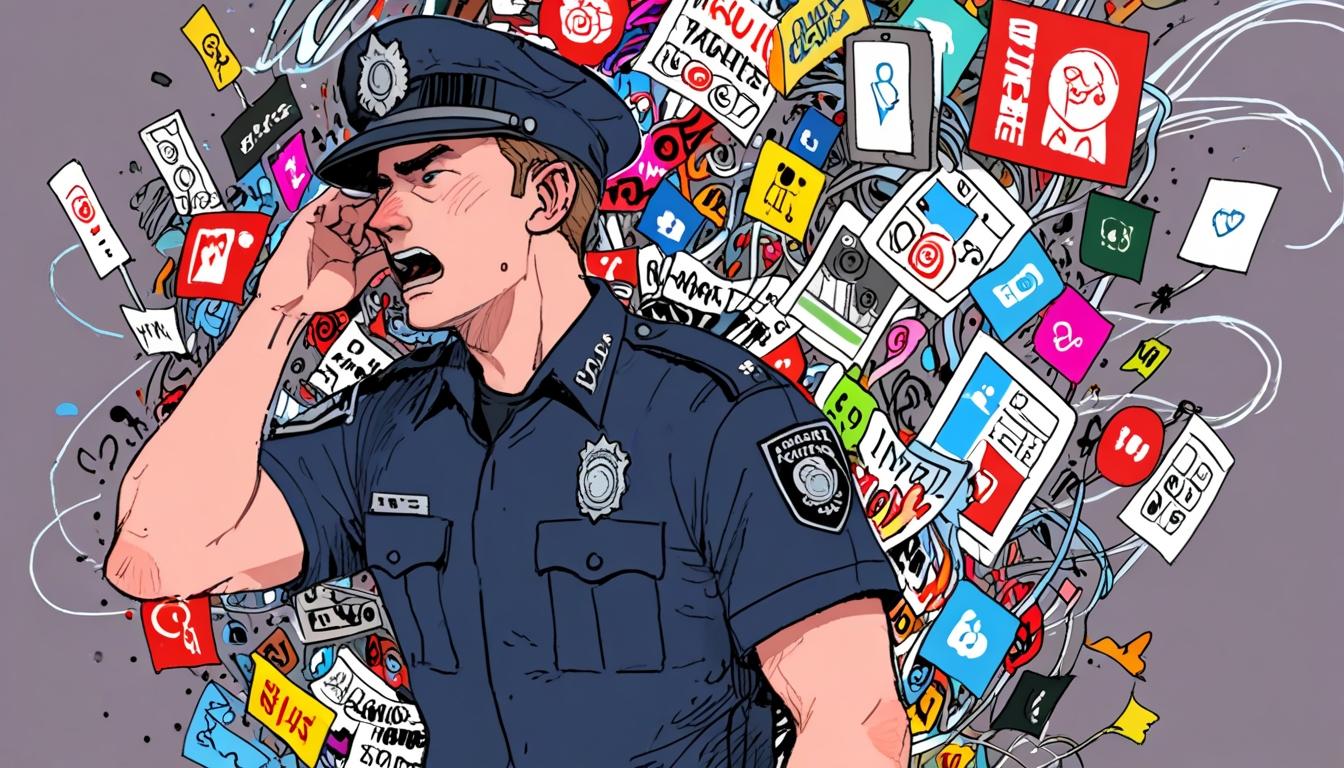Public Safety at Risk: The Fallout from Misinformation in the Southport Riots
In the wake of the tragic Southport knife rampage last summer, a damning report has revealed that police forces in England struggled to counteract the damaging misinformation that fuelled nationwide riots. The findings, published by Sir Andy Cooke, Chief Inspector of Constabulary, highlight the urgent need for a more proactive approach to managing false information and protecting public safety.
On July 29, 2024, the community was rocked by the murders of three young girls during a Taylor Swift-themed dance class: six-year-old Bebe King, seven-year-old Elsie Dot Stancombe, and nine-year-old Alice Da Silva Aguiar. The horrific incident led to immediate unrest, with riots erupting in Southport and quickly spiralling to numerous towns across Britain. Within just 24 hours, a torrent of misinformation flooded social media platforms, falsely identifying the assailant, Axel Rudakubana, as a Muslim asylum seeker who had recently arrived in Britain. In reality, Rudakubana was a Cardiff-born teenager from a Rwandan Christian family, serving a life sentence for the murders.
The spread of false narratives saw over 27 million impressions on various social media platforms, exacerbating tensions and leading to widespread violence. The Inspectorate's report criticises the police for their slow response to this wave of disinformation, a concern echoed widely across the law enforcement community.
Sir Andy Cooke stated that police forces need to take misinformation more seriously, particularly during crises where public safety is at stake. He emphasised the necessity of filling the "information void" that was evident during the riots. "Policing cannot be passive when public safety is at risk," he asserted. It is clear that a lack of urgency in addressing these issues contributed to the rapid escalation of discontent among the public.
The report also highlighted that police forces did not adequately heed previous recommendations regarding intelligence gathering related to disorder and social media engagement. Sir Andy pointed out that despite recognising the complexity of the social unrest, the police force must adapt and evolve to more effectively counter emergent threats. The disconnect between police strategies and the realities of online communication creates a fertile ground for misinformation to thrive.
Gavin Stephens, chairman of the National Police Chiefs' Council, advocated for a more nuanced understanding of the challenges posed by misinformation. He argued that while there are important lessons to learn, the responsibility for ensuring accurate information lies not solely with law enforcement but also with social media platform operators and the individuals posting content. The Chief Inspector acknowledged that police resources are often "exceptionally limited" for monitoring online content, asserting the need for a whole-government response to effectively tackle misinformation.
Calls for improved collaboration between police and social media companies are becoming increasingly urgent. Sir Andy noted that the Online Safety Act is insufficient in addressing real-time issues, suggesting that regulatory bodies like Ofcom need enhanced powers to remove harmful content swiftly. The rapid spread of misinformation during incidents like the Southport riots made it evident that existing measures were not equipped to deal with the immediacy required in such situations.
Moreover, the Inspectorate's report pointed to a concerning inability within police forces to manage the misinformation landscape. As a leading police communications figure indicated, there is no coherent strategy in place to tackle the scale or complexity of online disinformation. This gap leaves authorities vulnerable during crises, when misinformation can lead to irrational and violent public responses.
The implications of these findings are profound. As technology continues to transform society, the call for police forces to invest in both resources and technology to monitor online discourse has grown louder. Emily Spurrell, chairwoman of the Association of Police and Crime Commissioners, emphasised the need for police to keep pace with technological advancements to effectively identify and respond to potential threats of public disorder.
As the country grapples with these lessons, it becomes increasingly clear that a multi-faceted approach is essential. The integration of better intelligence networks, a more proactive policy for managing misinformation, and tighter regulations for online content could significantly enhance the ability of law enforcement to protect public safety in a rapidly evolving information landscape. The tragic events sparked by the Southport incident should serve as a wake-up call for all stakeholders involved in public safety, urging swift action to ensure that history does not repeat itself.
Reference Map:
- Paragraph 1 – [1]
- Paragraph 2 – [1]
- Paragraph 3 – [1]
- Paragraph 4 – [1]
- Paragraph 5 – [1]
- Paragraph 6 – [1]
- Paragraph 7 – [1]
- Paragraph 8 – [1]
- Paragraph 9 – [1]
- Paragraph 10 – [1]
- Paragraph 11 – [1]
Source: Noah Wire Services
